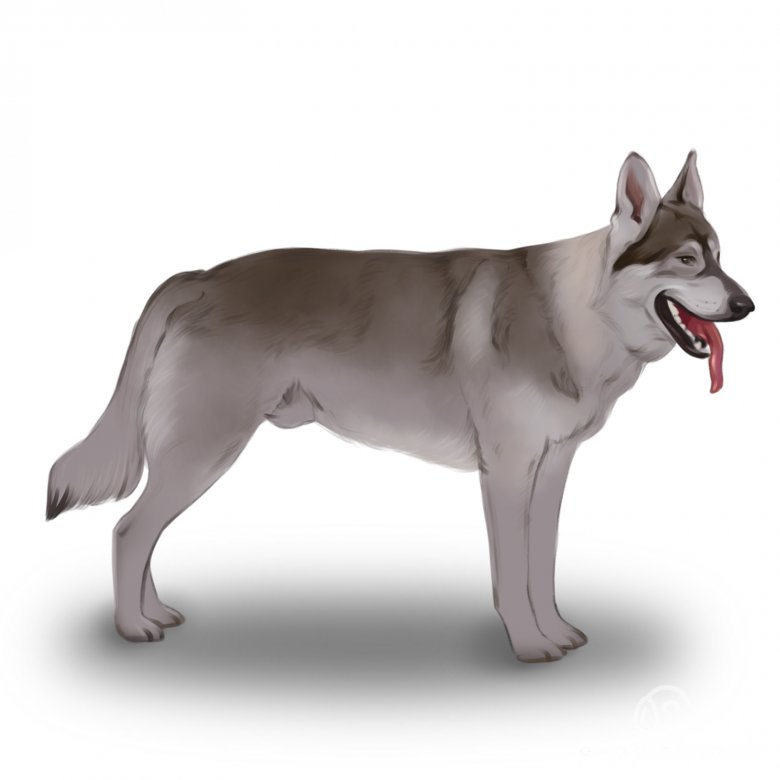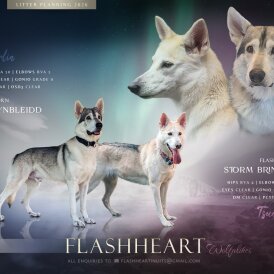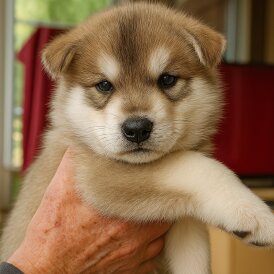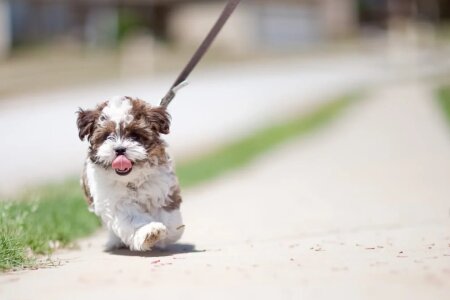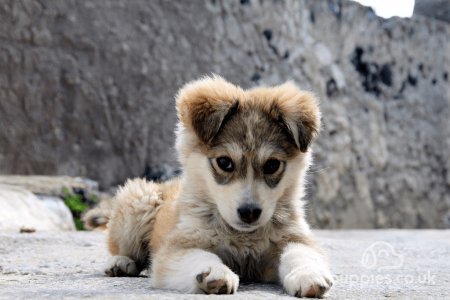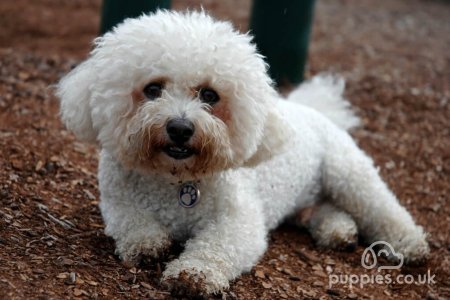Northern Inuit (Tamaskan dog, British Timber dog, Utonagan, Wolf Dog)
Overview
With their wolf-like features and surprisingly gentle and affectionate temperament, the Northern Inuit has warmed its way into the hearts of happy owners around the world. Popularised in the past decade by the television series Game of Thrones, Northern Inuits have a distinctive wolf appearance, but deep inside they are 100% dog.
Don’t be fooled by their strong, sledge dog appearance - Northern Inuits are companion pets specifically bred to resemble wolves whilst being able to settle into a home, sledges or not.
Physical Appearance
In brief, Northern Inuits are essentially wolves. Now, of course, they are not technically wolves, nor are they related, but they certainly have the appearance of a wolf. Northern Inuits are athletic and strong, in a medium- to large-sized body.
Their eyes are endearing, oval-shaped, and come in many colour variations. Their ears are distinctively wolf-like, standing erect in a triangular shape. Their tails are densely covered and fur and take on a sabre-like crescent shape whilst in motion, never too curved nor too long.
Northern Inuits have thick, dense double coats that wick away water and the elements very well. Colour combinations include any of the following: white, black, grey, sable, and/or apricot.
This breed most closely resembles Alaskan Malamutes, Siberian Huskies, and to a lesser extent, German Shepherds and Samoyeds. It is believed that the Northern Inuit was bred from these other breeds.
How big do Northern Inuit dogs get?
Character Traits
It’s often said that we ought not to judge a book by its cover. In the case of the Northern Inuit, one could easily assume that the wolf-like breed is resolute and accustomed to mushing sledges across the Arctic tundra. In reality, however, the Northern Inuit’s temperament is much closer to other companion breeds than it is to sledge dogs or hunting dogs.
They are kind and gentle, showing affection to their owners, their families, and even to strangers. For this reason, they are deceptively poor guard dogs. They may look tough and defensive, but they are loving and trusting of others. The original breeders sought to create an ideal companion pet, not the perfect watchdog or guard dog.
Are Northern Inuit dogs intelligent? Yes.
Are Northern Inuit dogs affectionate? Yes, very.
Do Northern Inuit dogs have high or low energy levels? High energy.
Are Northern Inuit dogs loyal? Yes.
Are Northern Inuit dogs playful? Yes, very.
Are Northern Inuit dogs aggressive? No.
Are Northern Inuit dogs easy to train? Yes, somewhat.
Are Northern Inuit dogs good guard dogs? No, they tend to be far too friendly.
Ability to Socialise
On account of their lovely temperament, Northern Inuits are fairly easy to train and benefit greatly from proper socialisation as puppies. Introduce them to your family members and friends gradually and they will quickly develop a loving, affectionate relationship that will bring smiles to their faces.
Furthermore, Northern Inuits get along fairly well with other pets and animals in the house, although they do have a high prey drive and are prone to chase. Around other dogs, they may show signs of dominance, so this is something to correct early on as a puppy.
Although they get along well with children, their massive size could make them a danger when playing around younger children. Keep a close eye on them and limit playtime to reduce the chances of the Northern Inuit from getting a little too excited and boisterous.
Do Northern Inuit dogs get along with other pets? Not really, they tend to chase small pets and animals.
Do Northern Inuit dogs get along with other dogs? Not really, they may show dominance or aggression.
Are Northern Inuit dogs good with kids? Yes, around older children.
Are Northern Inuit dogs good with strangers? Yes, they are very sociable around strangers.
Lifestyle Suitability
One need not live on the frozen fringes of the Arctic Ocean to own a Northern Inuit. They are suitable for domestic living and were bred for this purpose. However, not all homes are as welcoming simply due to their large size and desire to play outdoors.
Rural environments and large homes with rear gardens, fenced off, whereby they can play and work off much of their built-up energy are highly preferable. Do not purchase a Northern Inuit for apartment living. They will quickly bore and may become destructive, howl, or bark excessively due to their sheer boredom.
They can withstand the cold superbly, although the British climate will never get as cold as what Inuits may experience on a daily basis. Heat, on the other hand, may give them some irritation due to their thick double coat.
First-time owners should consider a different breed than the Northern Inuit. It is possible to purchase a Northern Inuit as your first puppy, but consult breeders and veterinarians to ensure that you are raising him properly.
Are Northern Inuit dogs good for first-time owners? No.
Are Northern Inuit dogs hypoallergenic? No.
Are Northern Inuit dogs prone to drooling? Not too much.
Are Northern Inuit dogs a good breed for apartment living? Absolutely not.
Do Northern Inuit dogs shed a lot? Yes.
Do Northern Inuit dogs bark a lot? Yes.
Can Northern Inuit dogs be left alone at home? Yes, but only for short periods.
Can Northern Inuit dogs handle the heat? Yes, but not too hot.
Can Northern Inuit dogs handle cold temperatures? Absolutely.
Are Northern Inuit dogs sensitive to loud noises? Yes.
General Health & Health Issues
This breed fares well in terms of health, with only a few notable health problems that may affect them. Northern Inuits rank about average in terms of health. Keeping a healthy diet and regular visits to the veterinarian can promote good health and diagnose any problems before they get worse, respectively.
Some common problems include:
Glaucoma: damaged optic nerves are a common sign of glaucoma, a group of optical diseases that can be fortunately treated;
Epilepsy: some breeds, including Northern Inuits, are prone to epileptic seizures. Diagnosing and treating epilepsy requires professional medical care, so take your dog into the veterinarian’s clinic at the first sign of epilepsy;
Hip dysplasia: abnormal hip bone development in breeds such as Northern Inuits can be a sign of hip dysplasia. This can be treated and surgical interventions can sometimes correct more severe dysplasia;
Elbow dysplasia: similar to hip dysplasia, elbow dysplasia is unfortunately rather common in large breeds such as Northern Inuits. Pain in the elbow joints may be a sign of elbow dysplasia.
How long do Northern Inuit dogs live? - 12-14 years
Exercise & Play Time
As a large, high energy breed, Northern Inuits need plenty of healthy outdoor exercise every day to promote healthy development. No less than one hour per day should be spent outdoors with your Northern Inuit, although as puppies a little less may suffice to avoid overexertion.
Keep your Northern Inuit on a lead when outdoors and go for a brisk walk or jog, then follow up with some exercise, preferably off-lead provided that it’s safe to do so. For this reason, a large outdoor garden (fenced) would be ideal for a Northern Inuit.
As an intelligent breed, Northern Inuits require plenty of physical and mental stimulation.
How much exercise does a Northern Inuit dog need? - At least 1 hour per day
Do Northern Inuit dogs like water play? Yes, but keep a close eye on them.
Nutrition & Feeding
Quite often, Northern Inuits suffer from sensitive digestion and must therefore be carefully monitored at feeding time. If you suspect your Northern Inuit consumed too much or he simply isn’t tolerating his diet very well, please consult your veterinarian and work out a healthy feeding regimen for your dog.
Are Northern Inuit dogs prone to weight gain? Yes, especially as they age.
How much should I feed a Northern Inuit puppy? About 290-580g per day, in 3-4 sessions.
How much should I feed an adult Northern Inuit dog? About 330-520g per day, in total.
Care & Maintenance
Grooming a Northern Inuit is not too challenging, but it requires some frequent cleaning both of their coat as well as around the home. The reason for this is simply due to their profuse shedding, especially during the spring and autumn months. Considering their large size, the dead hairs all around the home will quickly accumulate without a thorough weekly cleaning.
Do not mistake Northern Inuits for other, more solitary ‘Northern’ sledge dog breeds. They were bred as companions and therefore require frequent companionship. They should not be left alone at home for too long.
- Grooming: 3-4 times weekly, brush your Northern Inuit’s thick coat with a brush and remove any dead hairs. Occasionally check his paws and trim any hairs growing between.
- Emotional care: do not allow your Northern Inuit to remain at home for anything longer than a few hours during the day. They thrive on social interaction and companionship.
History of the Northern Inuit
There is some debate surrounding the exact origins of the Northern Inuit, but it is widely believed that the breed was first conceived in the 1980s in the United Kingdom by breeder Eddie Harrison.
The breed is a mix of Siberian Husky, Alaskan Malamute, and German Shepherd breeds, but the original purpose of breeding was not to create a new sledge dog or working dog but rather a domesticated companion dog that retained the wolf-like appearance whilst having a kind, loving temperament.
This breed is not yet recognised by any major Kennel Clubs, but he has boomed in popularity in the UK and worldwide thanks to his appearance as a ‘Dire Wolf’ on the HBO television series Game of Thrones in 2011.
Interesting Facts About Northern Inuit Dogs
Fans of the television series Game of Thrones may be interested to know that Northern Inuits were widely used as depictions of Dire Wolves throughout the series;
American collegiate sports association NC State Wolfpack’s mascot is a Northern Inuit dog;
Although one may assume that Northern Inuit dogs originated amongst the Inuit tribes of Northern Canada, this is purely postulation and no conclusive evidence supports this. It’s just a name that fits, perhaps.
Getting a Northern Inuit Puppy
The demand for Northern Inuit puppies began to soar in 2014, which means that supply may be limited and/or long queues to purchase or adopt a puppy may hold prospective owners back. Please consult our buying guide before purchasing a Northern Inuit so that you understand your duties and responsibilities. If you would like to purchase a Northern Inuit, we deal with reputable breeders here in the UK.
How much does a Northern Inuit cost to buy? - Over £500.
How much does a Northern Inuit cost to feed? - An adult Northern Inuit costs about £1.50-£1.75 per day to feed.
How much does insurance for a Northern Inuit cost? - About £25-£50 per month.
Sensible alternatives to purchasing a new Northern Inuit puppy include rescue and adoption.
Additional resources can be found via Northern Inuit registries and associations such as:






